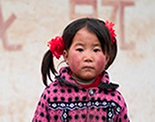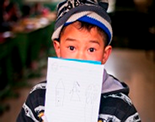
Source: Duan Chengrong et al., estimation based on the 2010 Population Census conducted by the National Bureau of Statistics
Figure 10.7
Large-scale migration was the key factor behind variation in the structure of children’s families and was the most common reason for children not living with both parents. Among 84.5 million children who did not live with both parents nationwide in 2010, 61.03 million were rural left-behind children and some 13 million were migrant children.
Half of the rural left-behind children (47 per cent) did not live with either parent, as both parents had migrated from home. A total of 36 per cent of rural left-behind children had migrant fathers and lived with only their mothers, while 17 per cent of left-behind children had migrant mothers and lived with only their fathers. Grandparents are the main caregivers of left-behind children, especially younger left-behind children.
上一篇:Figure 10.6 Sex ratio of migrant children and rural left-behind children, 2010
下一篇:Figure 10.8 Proportion of children who failed to receive or complete compulsory education as required, 2010





























